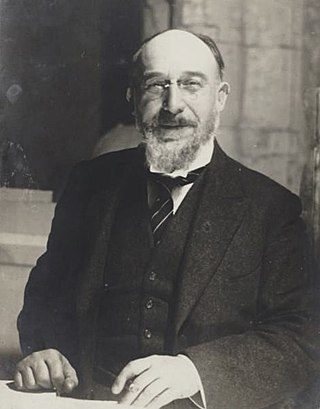
A Midsummer Night's Dream is a two-act ballet choreographed by George Balanchine to Felix Mendelssohn's music to Shakespeare's play of the same name.

A Midsummer Night's Dream is a two-act ballet choreographed by George Balanchine to Felix Mendelssohn's music to Shakespeare's play of the same name.
A Midsummer Night's Dream, Balanchine's first completely original full-length ballet, premiered at New York City Ballet on 17 January 1962, [1] [2] with Edward Villella in the role of Oberon, Melissa Hayden in the role of Titania, and Arthur Mitchell in the role of Puck. They were joined by Francisco Moncion in the role of Theseus- Duke of Athens. [3]
In addition to the incidental music, Balanchine incorporated other Mendelssohn works into the ballet, including the Overtures to Athalie, Son and Stranger , and The Fair Melusine, the "String Symphony No. 9 in C minor" and The First Walpurgis Night . [1]
The ballet employs a large children's corps de ballet. [4] Act I tells Shakespeare's familiar story of lovers and fairies while Act II presents a strictly classical dance wedding celebration. The ballet dispenses with Shakespeare's play-within-a-play finale. A Midsummer Night's Dream opened The New York City Ballet's first season at the New York State Theater in April, 1964. [1]
A 1966 performance was filmed and released the following year. It featured Suzanne Farrell, Edward Villella, Arthur Mitchell and Gloria Govrin. [5]
A performance in 1986 was filmed as a part of Live from Lincoln Center . The Lincoln Center released the video online in light of the impact of the 2019–20 coronavirus pandemic on the performing arts. [6]
In 1999, a Pacific Northwest Ballet performance at the Sadler's Wells Theatre in London was filmed and released as a DVD. [7]
The Paris Opera Ballet also released a recording of a performance during the 2019-20 coronavirus pandemic, which featured Eleonora Abbagnato, Laëtitia Pujol, Alice Renavand, Stéphane Bullion, Hugo Marchand and Karl Paquette. [8]
When the coronavirus pandemic cut short the San Francisco Ballet 2020 performance to just its opening night on March 6, it was subsequently recorded in an empty War Memorial Opera House shortly after its opening and released as part of the all-digital 2021 season. [9] [10]
| Roles | World premiere (1962) [11] | 1966 filmed version [5] | 1986 filmed version [6] | Paris Opera Ballet premiere (2017) [12] |
|---|---|---|---|---|
| Titania | Melissa Hayden | Suzanne Farrell | Maria Calegari | Eleonora Abbagnato |
| Oberon | Edward Villella | Ib Andersen | Paul Marque | |
| Puck | Arthur Mitchell | Jean-Pierre Frohlich | Hugo Vigliotti | |
| Hippolyta | Gloria Govrin | Victoria Hall | Alice Renavand | |
| Theseus - Duke of Athens | Francisco Moncion | Cornel Crabtree | Florian Magnenet | |
| Titania's cavalier | Conrad Ludlow | Jock Soto | Stéphane Bullion | |
| Helena | Jillana | Stephanie Saland | Fanny Gorse | |
| Demetrius | Bill Carter | Peter Frame | Audric Bezard | |
| Hermia | Patricia McBride | Judith Fugate | Laëtitia Pujol | |
| Lysander - Beloved of Hermia | Nicholas Magallanes | Kypling Houston | Alessio Carbone | |
| Butterfly | Suki Schorer | Katrina Killian | Muriel Zusperreguy | |
| divertissement | Violette Verdy Conrad Ludlow | Merrill Ashley Adam Lüders | Sae Eun Park Karl Paquette | |
[ further explanation needed ][ citation needed ]


A Midsummer Night's Dream is a comedy play written by William Shakespeare in about 1595 or 1596. The play is set in Athens, and consists of several subplots that revolve around the marriage of Theseus and Hippolyta. One subplot involves a conflict among four Athenian lovers. Another follows a group of six amateur actors rehearsing the play which they are to perform before the wedding. Both groups find themselves in a forest inhabited by fairies who manipulate the humans and are engaged in their own domestic intrigue. A Midsummer Night's Dream is one of Shakespeare's most popular and widely performed plays.

George Balanchine was a Georgian-American ballet choreographer, recognized as one of the most influential choreographers of the 20th-century. Styled as the father of American ballet, he co-founded the New York City Ballet and remained its artistic director for more than 35 years. His choreography is characterized by plotless ballets with minimal costume and décor, performed to classical and neoclassical music.

New York City Ballet (NYCB) is a ballet company founded in 1948 by choreographer George Balanchine and Lincoln Kirstein. Balanchine and Jerome Robbins are considered the founding choreographers of the company. Léon Barzin was the company's first music director. City Ballet grew out of earlier troupes: the Producing Company of the School of American Ballet, 1934; the American Ballet, 1935, and Ballet Caravan, 1936, which merged into American Ballet Caravan, 1941; and directly from the Ballet Society, 1946.
The School of American Ballet (SAB) is the associate school of the New York City Ballet, a ballet company based at the Lincoln Center for the Performing Arts in New York City. The school trains students from the age of six, with professional vocational ballet training for students aged 11–18. Graduates of the school achieve employment with leading ballet companies worldwide, and in the United States with New York City Ballet, American Ballet Theatre, Boston Ballet, San Francisco Ballet, Miami City Ballet, Pacific Northwest Ballet and Houston Ballet.

Violette Verdy was a French ballerina, choreographer, teacher, and writer who worked as a dance company director with the Paris Opera Ballet in France and the Boston Ballet in the United States. From 1958 to 1977 she was a principal dancer with the New York City Ballet where she performed in the world premieres of several works created specifically for her by choreographers George Balanchine and Jerome Robbins. She was Distinguished Professor of Music (Ballet) at the Jacobs School of Music, Indiana University, in Bloomington, and the recipient of two medals from the French government.

Francis Flute is a character in William Shakespeare's A Midsummer Night's Dream. His occupation is a bellows-mender. He is forced to play the female role of Thisbe in "Pyramus and Thisbe", a play-within-the-play which is performed for Theseus' marriage celebration.

Edward Villella is an American ballet dancer and choreographer. He is frequently cited as America's most celebrated male dancer of ballet at the time. He has won numerous awards, including the Daytime Emmy Award for Outstanding Children's Special, the Kennedy Center Honors, and the National Medal of Arts.
A Midsummer Night's Dream is a 1595 play by William Shakespeare.

Nicholas Magallanes was a Mexican-born American principal dancer and charter member of the New York City Ballet. Along with Francisco Moncion, Maria Tallchief, and Tanaquil Le Clercq, Magallanes was among the core group of dancers with which George Balanchine and Lincoln Kirstein formed Ballet Society, the immediate predecessor of the New York City Ballet.
Ballet Society is a non-profit educational institution founded in 1946 by Lincoln Kirstein and George Balanchine. At its founding, Balanchine was the Artistic Director and Kirstein served as the Secretary. The president of Ballet Society is Nancy Lassalle, an original Board member of both the School of American Ballet and the New York City Ballet, currently Emerita.
Tarantella is a ballet choreographed by George Balanchine to Grande Tarantelle by Louis Moreau Gottschalk, arranged by Hershy Kay. The ballet premiered on January 7, 1964, at the New York City Center, performed by New York City Ballet's Patricia McBride and Edward Villella.
Symphony in C, originally titled Le Palais de Cristal, is a ballet choreographed by George Balanchine, to Georges Bizet's Symphony in C. The ballet was originally created for the Paris Opera Ballet, and premiered on July 28, 1947 at Théâtre National de l'Opéra.

Afternoon of a Faun is a neoclassical ballet choreographed by Jerome Robbins to Claude Debussy's Prélude à l'après-midi d'un faune. The ballet features two young dancers meeting at a rehearsal studio. Robbins was influenced by Stéphane Mallarmé's poem L'après-midi d'un faune, the inspiration for Debussy's score, as well as Vaslav Nijinsky's 1912 ballet to the same score, and his own observation of dancers.

Prodigal Son, or Le Fils prodigue, Op. 46 is a ballet created for Diaghilev's Ballets Russes by George Balanchine to music by Sergei Prokofiev (1928–29). The libretto, based on the parable in the Gospel of Luke, was by Boris Kochno, who added a good deal of drama and emphasized the theme of sin and redemption ending with the Prodigal Son's return.

Le songe d'une nuit d'été is an opéra-comique in three acts composed by Ambroise Thomas to a French libretto by Joseph-Bernard Rosier and Adolphe de Leuven. Although it shares the French title for Shakespeare's play, A Midsummer Night's Dream, its plot is not based on the play. Shakespeare himself is a character in the opera as are Elizabeth I and Falstaff.
The 1982 Society of West End Theatre Awards were held in 1982 in London celebrating excellence in West End theatre by the Society of West End Theatre. The awards would not become the Laurence Olivier Awards, as they are known today, until the 1984 ceremony.
Le Songe d'une nuit d'été is a French TV film from 1969. It is based on A Midsummer Night's Dream by William Shakespeare, and was directed by Jean-Christophe Averty.

The Cinq grimaces pour Le songe d'une nuit d'été is a set of incidental music pieces for orchestra by Erik Satie. Composed in 1915 for a planned circus-style staging of Shakespeare's play A Midsummer Night's Dream, it marked the composer's first collaboration with author Jean Cocteau. The production failed to materialize and Satie's music went unperformed in his lifetime. His score was published posthumously in 1929.

Francisco Moncion was a Dominican-born American ballet dancer and choreographer who was a charter member of the New York City Ballet. Over the course of his long career, spanning some forty years, he created roles in major works by George Balanchine, Jerome Robbins, and others. He was also an amateur painter.
Divertimento No. 15 is a ballet choreographed by George Balanchine to Mozart's eponymous music. The ballet was made for the New York City Ballet. Balanchine first choreographed the score in 1952, for a ballet titled Caracole. In 1956, he planned to revive Caracole for a celebration of Mozart's bicentenary but made a new ballet to the same music instead. Divertimento No. 15 premiered on May 31, 1956, at the American Shakespeare Theatre, Stratford, Connecticut.